Tuesday February 4, 2014
Midway Campground
Big Cypress National Preserve
The Everglades is a BIG place.
We’ve visited the East side so now it’s time to see the West side. That means driving over to Everglades City. On the way we pass the Big Cypress Welcome Center which is their second visitor’s center. We’ve been here before and we just stop by so I can get my National Park Pass book stamped.
While we are there we listen to the ranger talking about the new plan to try to restore the historic Everglades water flow. He’s very knowledgeable Comprehensive Everglades Restoration Plan known as the CERP. He explains that part of the plan is to raise the roadway of Highway 41 which crosses the Everglades east to west so that the water can flow freely. I ask him whether he thinks this is all really going to happen and he reminds me that he works for the government and this is their plan but I can tell he, like me, is very skeptical that all the powers that be will ever get together with the good of the natural area at the top of their list of demands.
There is a great display outside the center between it and the theater where they show the Big Cypress film. You can pump water and it will flow down on a mock up of the historic everglades and on the altered landscape. You can see how little rain makes it into the glades in the new situation.
You pump the handle and rain falls. On the left hand side you can watch the water flow solely in a broad sheet across the land. It soaks into the soil, trickles through the limestone and fills up the aquifers. The rains fill the swamp and the water flows freely into the estuaries and the gulf.
On the right we see that over time, roads, air conditioning and mosquito control open Florida to more people. As towns, cities and agriculture increase water use does too. Canals, roads and paved surfaces alter the natural flow and less clean water is able to flow into coastal estuaries. Everything changes. Water is siphoned off, the flow is decreased by more than 50% to the estuaries.
The folks at both the Everglades and Big Cypress visitor centers really understand the problematic situation in the Everglades.
We pay a visit to the country’s smallest post office. Good thing it is so famous or with all the budget cuts I suspect it would be gone.
Further on down the Route 41 before the turnoff to Everglades City on Route 29 we find the country’s smallest post office.
It’s too cute! It has been in continuous service since 1953 as both a post office and a ticket station for Trailways bus lines. It still services residents in a three county area including deliveries to Seminole and Miccosukee Indians living in the area.
Apparently lots of tourists stop by to get the the world famous Ochopee post mark. Sadly we just missed the post mistress. Her hours are 8 to 10 and 12 to 4. Early lunch I guess. It’s 10:30 AM as we pull away.
Another few miles and we arrive at the Gulf Coast Visitor Center for Everglades National Park.
It too is a wonderful visitor center and has an amazing amount of information in a very small space. As we come up, a ranger is giving a talk on Dolphins out on the patio by the kiosks. They have several different tours of the 10,000 islands which leave from their dock.
We learn about the 5 sea turtles in the area and about the original inhabitants, the Calusa Indians who created huge shell mounds on many of the 10,000 Islands on the western edge of the Everglades National Park. There are an amazing number of archeological sites all through the Islands. I would love to do an over night kayak and stop at some of these sites.
The Calusa ceremonial masks are beautiful works of art.
There is also a display of shell tools.
AND here you can see the difference in the skulls of the alligator and crocodile. And boy is there a difference. Alligator on your right. Crocodile on your left.
The western side of the Everglades has no hiking trails. Only water trails.
And they have MILES of those.
On an outside kiosk we see a map showing the Wilderness Waterway routes and the chickees and campsites where you can stay throughout the 10,000 Islands. Motor boats, kayaks and canoes can explore deep into the Everglades, stay overnight at a reserved campsite and perhaps paddle the entire marked 99 mile trail from Everglades City to Flamingo. Sounds great to me if I could fit all the supplies in the two small dry wells in my kayak.
The 10,000 Islands are part of the largest continuous mangrove forest in the western hemisphere. Just one acre of mangroves can produce 3.6 TONS of leaf litter a year. These leaves provide food for mullet, crabs and shrimp which are eaten by bigger fish. An estimated 90% of the commercially harvested seafood species in south Florida depend on the mangrove estuary.
There is a shelter with picnic tables over by the docks on the water and it looks like the perfect place for lunch.
On the way we look through the native plants garden where we find this big cactus and GIANT agave. The catcus always surprises me here since I expect to find it in a desert not in such a tropical humid place but I guess and is sand.
I know nothing about agave except that we use it as a sweetener along with pure maple syrup. I learn here that the agave flowers only once with a tall stalk of greenish yellow flowers and then dies. This once in a life time bloom usually happens after 10 to 50 years. How in the world do they make the syrup without killing the plants. This one surely looks big enough to be 50 years old.
Way taller than me. How old is it??
Great picnic spot!
As we leave to head out for Smallwood’s store a ranger is outside giving a program about the CERP. Everyone is concerned about the freedom of water to flow to the Everglades and wants to spread the word about this important program. I hope we can all get together on this for the health of this beautiful one in the world area. This graphic is particularly poignant showing the historic natural flow of the water, the current situation with all the drain offs and what they hope to do which even at its best is nothing near nature’s original plan.
Smallwood’s store is located on Chocoloskee Island.
Why do we want to see Smallwood’s store? Who ever heard of it?
Well any one who has read Peter Matthiessen’s Shadow Country or the three previous books from which it was condensed.
We’ve come to see the place where the events surrounding the controversial Edgar Watson took place.
In addition, the store is a step back in time to the turn of the 20th century in what was then seriously backwoods Florida. The very last wild and wooly place in the country. A place where people who had something to hide, or who were running from something or who just wanted to live alone and on their own with as few rules and interference as possible came.
As we pull up in front of the store, we hear blue grass music. They are singing Good Old Mountain Dew. Now being from the mountains of Virginia, this sounds like old home to us. We go to check it out. Sure enough, one of the players is from SW Virginia and one is from North Carolina.
These boys gather here once a week, usually on Thursday, but this is our lucky Tuesday to find them here adding some authentic sounds to this step back into history.
The store was built in 1906 by Ted Smallwood and served as post office, store and Indian Trading Post.
Ted was the postmaster and delivered the mail by boat until his retirement in 1941. His business was with early settlers and Seminole Indians. A road came to the island in 1955. Ted used a conch shell horn to signal citizens that he was approaching Chocoloskee with the mail. He ran the mail from Chocoloskee via Everglades City and then on to Marco Island three times a week starting in 1896. He used a small sailboat and the run took one day up, and one day back, provided the weather cooperated. He was paid $1 a day for running the mail.
Inside the store is like a step back in time, a time warp. It seems as though Ted has just stepped away. Inside the store, the store is on the left and the post office on the right.
Candy anyone?
This is the picture of the post office I took today. And on the right is the photograph showing it in 1910.
Postmaster Smallwood spoke the Seminole and Micaccsukee languages fluently.
The most famous event that occurred at Smallwood’s store was the murder of Edgar Watson. It’s fabulously written story that I first read as my selection for a book club and later I read aloud to David. We both were anxious to see where Watson was killed and to see the store and pictures of the people whose opinions of the murder made up the story.
The store sells the trio of books first written to tell the Watson story. For years Peter Matthiessen had felt that it needed to be one book and so it took him 18 years to combine the books to his satisfaction. Shadow Country won the National Book Award in 2008 and the William Dean Howell’s Award in 2010. It is the culmination of a 30 year obsession with Edgar Watson and his life. Shadow Country too is for sale here.
The story is an intriguing one. Is everything they say about him true? Or did they create the legend. For sure he is an historical character with a vivid past when he arrives in the islands where he becomes the most successful sugar cane grower, builds the biggest house in the area and becomes infamous.
We love that there are pictures of his house. Pictures of Mr. Watson and other characters in the book as well as a map done to show where all the murders took place. Smallwood’s store is a store, a post office, a trading post and now a museum.
Watson himself was murdered right out on the beach just beyond the store. And we are here! HA!!
Another reason for our wanting to stop at Smallwood’s is that it is such a step back into the past and we find so many things that remind us of our turn of the century farm house and the way we furnished it.
Carrie will recognize this serving bowl we find on the Smallwood’s dining room table. Ours was used at many a thanksgiving dinner. It was part of the dinner ware given to me by my great aunt Carrie for whom our daughter is named.. I was very surprised to see it and the plate here on the Smallwood dinner table. The store was originally in the Smallwood home.
Carrie learned to churn butter on a churn exactly like this one. Ah the good old days. Butter, by the way is white, if freshly churned from cream and not tinted. Maybe there are some cows that give yellow milk but I’ve never seen them. Wonder how yellow became the color of butter.
A wringer washer just like this one and its tubs sat on my Aunt Carrie’s screened in back porch in Ocala Florida until she moved from there when she was 99 in 1997. She was still using it.
Ted could sell you just the things you would need to do your laundry with this equipment.
The Smallwood kitchen
And bedroom.
Smallwood’s store was a trading post as well.
The Seminoles traveled 30 or 40 miles by dugout canoe to trade at the store. Because of the effort involved in poling a dugout such a great distance they usually stayed for at least a week camped on the beaches around the store. During their stay Ted was often sitting around their campfires swapping tales with the Indians. He spoke their language fluently and tales of his involvement with the Indians and his work on their behalf are still told today.
It’s hard to imagine that Native Americans were still so free to live their lives here in the Everglades in the early 20th Century. It makes me wonder if they were the last Natives living their traditional lives.
It’s the same back balcony I step out on today just before we leave Smallwood’s.
It all seems like a spot in time preserved for all time, but not without great and ongoing cost. The property surrounding the road dead ending at the store has been purchased by a group planning to build condominiums on either side of the road to Smallwood’s. They have tried to buy the store and its property in order to have the road all to themselves. The owner, Ted Smallwood’s granddaughter has refused to sell so they tore up the road beyond their properties and she had to take them to court to get the road restored. The store was closed for a year as they delayed repairing it so visitors could have access. They are still trying to force her hand. The $5 admission goes to help pay the legal fees still on going. I don’t understand how this can be happening with the cooperation of the local city council to a structure on the National Register of Historic Places.
If you come to the Western Everglades, come all the way to Chocoloskee Island, visit Smallwood’s and help keep it open.








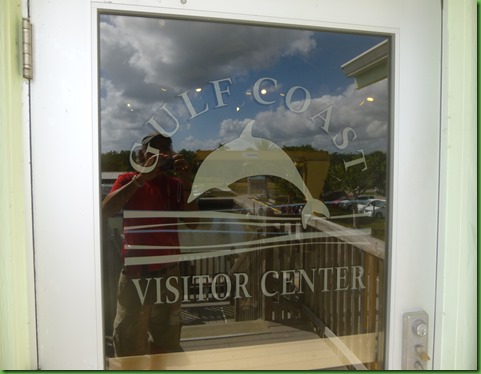
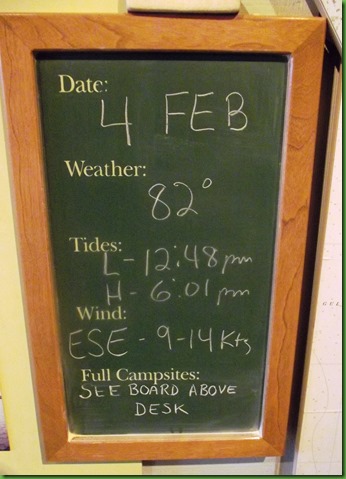
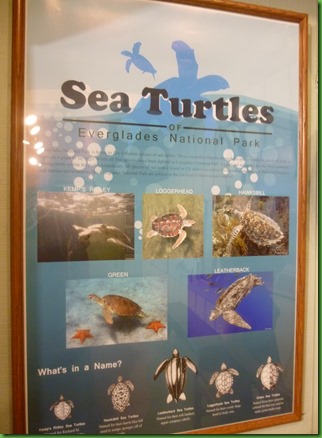








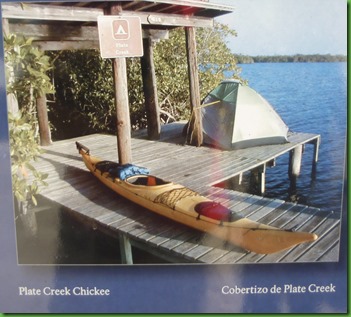

















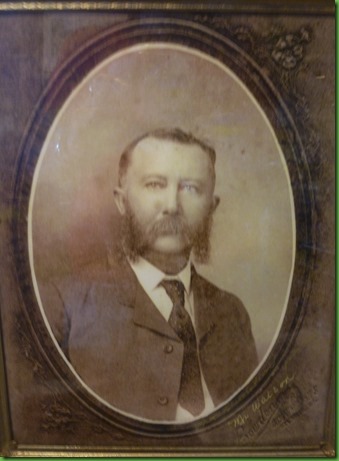












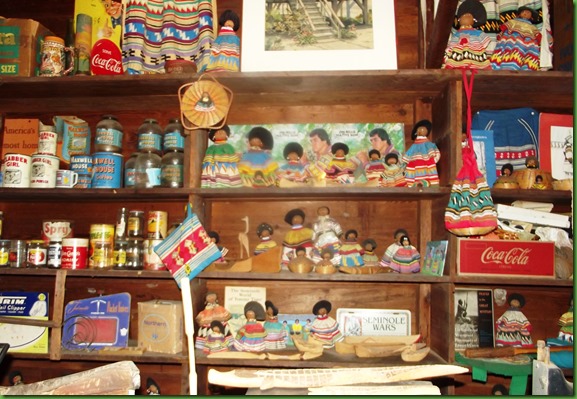



Great tour. We loved the smallwood store.
ReplyDeleteI hate it that big business can come in and devour history, property, etc for the almighty dollar. Thank you for providing a voice for the Everglades. I never knew anything about the Everglades until you started posting.
ReplyDeleteWhat a great place with a story. I'll have to check out the books. Wish you had gone there before we were at Big Cypress. This would have been a neat trip. Thanks for sharing the history:)
ReplyDeleteWhy do 'we' always think new is better, for heavens sake.... if it is on the National Register for Historic places there should be NO thought of anything else.. Just trying to keep things worth having.....
ReplyDeleteI love that little post office.
ReplyDeleteInteresting info. Crazy that you have the same bowl!
ReplyDeleteLynne D.
I do remember how wringer washer and put rubber diapers through that wringer diapers and explodes and I ruined a couple of shirts
ReplyDeleteDid you ever get anything caught in a wringer?or ruined a couple of shirts?
Fascinating story -- we will definitely visit Smallwood's store when we get back down there next year. And I loved the the Calusa ceremonial masks and the shell tools at the visitor's center. Thanks for giving us such a great tour!
ReplyDeleteWe were absolutely fascinated when we visited Smallwood's store, it really gives you a feel of how life in Old Florida must've been . I really hope they manage to keep the developers at bay.
ReplyDeleteThat bowl and plate and wringer washer look very familiar to me too. I remember ruining a blue wool men's suit in a wringer washer just like that.
ReplyDeleteCream from Jersey cows makes yellow butter. I've churned hundreds of pounds.
ReplyDeleteI've churned plenty of butter too and it's always been yellow - never white. Don't know the source of the heavy cream used - our milk here tends to come from Holsteins or Guernseys and I've used both commercial and organic cream.
DeleteMethinks someone has been fed misinformation!
All I know is my experience churning for years from a black cow who gave a quart of cream for every gallon of milk and the cream was never yellow and neither was the butter.
DeleteAgave is from whence the magical elixir "Tequila" comes. I got the book "Shadow Country" when you first mentioned it. I still have not read it. It will be next on my list! Thanks for the reminder
ReplyDeleteThat smallest post office is so cute! I got a postcard from that very one today :) As for Smallwood Store...so sad that all people think about is making things 'theirs' and having no respect for history. I remember that bowl and the butter churn indeed! What a trip back in time - the store certainly has been nicely preserved (as has the post office!). It sounds like I should read Shadow Country - so glad you got to see the place it took place. Hopefully, it will be there for future generations to enjoy as well!
ReplyDeleteI've paddled many a mile around those islands. It is a magical place.
ReplyDelete99 miles of trails to paddle? That's a lot of paddling! The Smallwood store is really interesting. I wonder where they get the old products.....they've been there for years and years? Do they sell things there or is it mainly a museum? It stinks that someone wants to build condominiums and ruin the place. Mr. Smallwood must have been a fascinating man. That he spoke the Native American languages and was friends with them is interesting given that white people did such a great job taking their lands and pushing them out. Beek's Mom had a wringer washer in Long Island when I first went there. I chewed all of the buttons off Beek's shirts in the wringer. Ooops! Have fun! XXXOOO
ReplyDelete